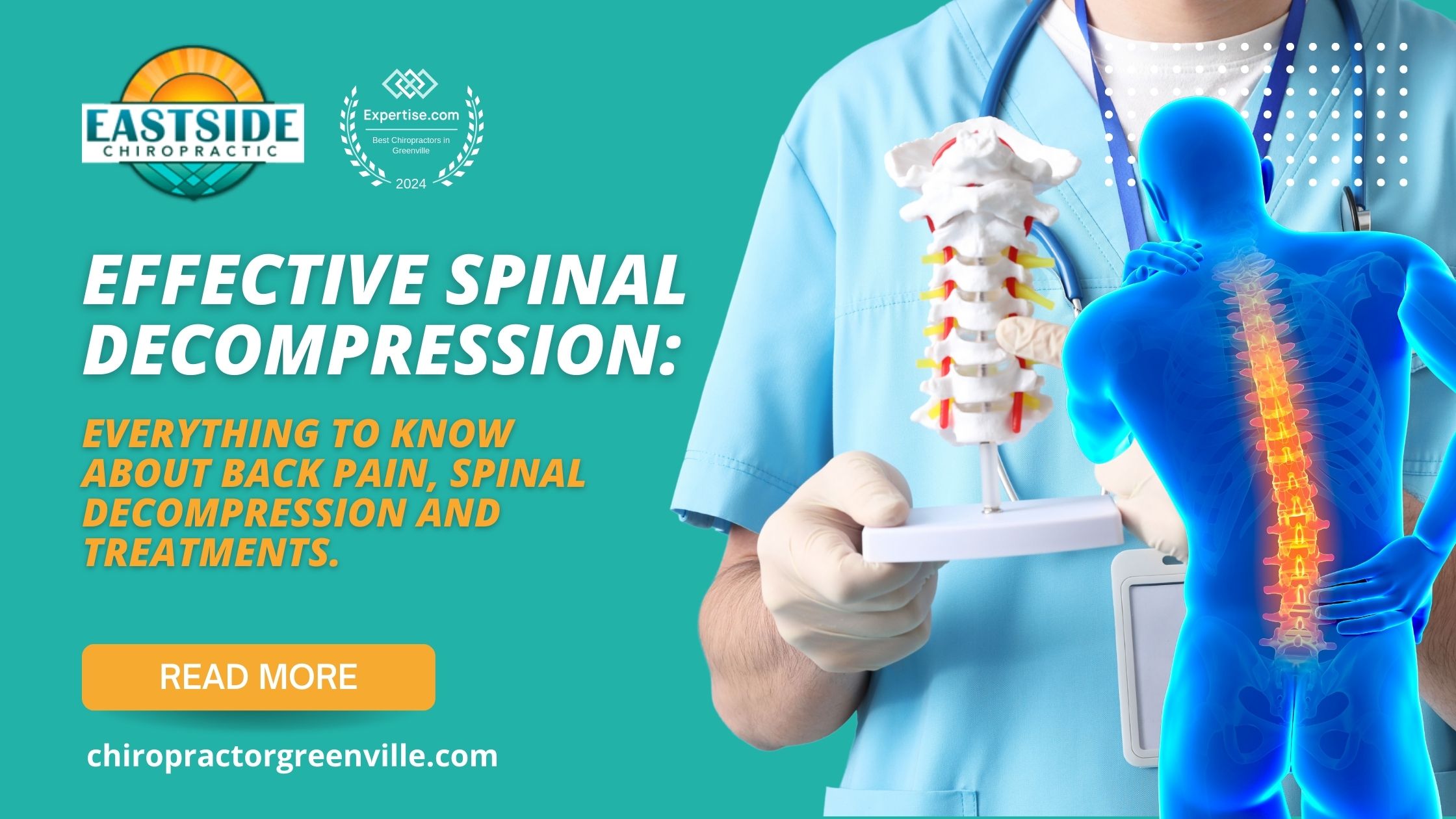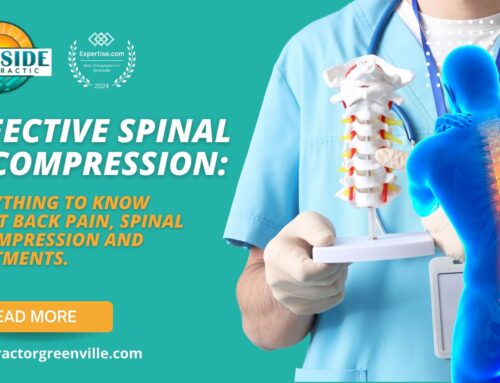Unlock Pain-Free Nights: Spinal Decompression While Sleeping
Introduction
Hey there! Welcome to Eastside Chiropractic PA in the charming town of Taylors, SC. If you’ve been tossing and turning at night, dealing with discomfort, or just looking to wake up feeling refreshed and pain-free, you’re in the right place. Spinal decompression is more than a buzzword; it’s a life-changing practice that can transform your quality of sleep. Stick around as we unravel the secrets to decompressing your spine while sleeping.
Understanding Spinal Decompression
So, what on earth is spinal decompression? Imagine your spine as a coiled spring. Throughout the day, activities and gravity compress it, leading to discomfort and even pain. Spinal decompression is like hitting the ‘reset’ button for your spine, stretching it out and relieving the pressure. The benefits? Reduced pain, improved posture, and a happier you!
The Need for Spinal Decompression at Night
Why nighttime, you ask? Great question! During sleep, your body undergoes natural repair and recovery processes. In other words, sleep is prime time for spinal decompression. Nighttime decompression offers sustained relief that you might not achieve during the day. Picture it as having a personal chiropractor working on your spine all night long. Sounds dreamy, right?
Mechanisms of Decompressing the Spine While Sleeping
Your body is an incredible machine. When you lie down, gravity isn’t pressing down on your spine as strongly. This natural positioning helps your spine to lengthen and decompress. But here’s the kicker: the way you sleep plays a massive role. Using the right pillows and mattresses can significantly amplify this natural decompression.
Ideal Sleeping Positions
Let’s dive into some specifics. Sleeping on your back often provides the best alignment for spinal health. You want your spine to maintain a natural curve, like a gentle ‘S.’ Side sleepers, don’t fret—you can achieve this too with a few adjustments! Just keep your spine straight and avoid fetal positions. It’s all about alignment, folks.
Using Pillows for Spinal Decompression
Choosing the right pillow can be game-changing. A pillow that supports the natural curve of your neck can enhance spinal decompression. Consider memory foam or cervical pillows designed to maintain spine alignment. Place a small pillow under your knees if you sleep on your back, or between your knees if you’re a side sleeper, to keep your spine straight.
Mattress Selection Tips
A good mattress is worth its weight in gold. Look for a mattress that balances comfort with support. Memory foam or hybrid mattresses usually get rave reviews for spinal health. Avoid overly soft or overly firm mattresses—they can do more harm than good. Test it out; your perfect match is out there!
Exercises and Stretches Before Bed
Want to prep your spine for a night of decompression? Try some gentle stretches or yoga before hitting the sack. Cat-cow stretches, child’s pose, and spinal twists work wonders. These exercises ease tension and prepare your spine for a restful night. Make it a nightly ritual!
Chiropractic Care and Spinal Decompression
Sometimes, you need professional help. Chiropractic care can be immensely beneficial for spinal decompression. Eastside Chiropractic PA offers tailored spinal decompression services that amplify the benefits you can achieve at home. Don’t just take our word for it—check out the glowing testimonials from our Taylors, SC, patients.
Dietary and Lifestyle Changes
Your diet can impact your spine too. Load up on foods rich in calcium and vitamin D for bone health. Stay hydrated to keep your spinal discs in top shape. And remember, smoking is a no-no—it reduces blood flow to your spine. These small changes can lead to big wins for your spinal health.
Common Mistakes to Avoid
Even well-meaning efforts can backfire. Avoid sleeping positions that twist or strain your spine. Be cautious of low-quality pillows that don’t offer enough support. And when it comes to exercises, improper techniques can cause more harm than good. Stay vigilant, and when in doubt, consult a professional.
Signs You Need Spinal Decompression
How do you know if you need spinal decompression? Look out for chronic back pain, stiffness, or discomfort that interrupts your sleep. If you’re waking up sore more often than refreshed, it’s a sign your spine needs some TLC. Self-assess regularly and consult a chiropractor if symptoms persist.
Technology and Tools for Nighttime Decompression
The tech world hasn’t left spinal decompression behind. Gadgets like lumbar supports, inversion tables, and specialized mattresses can help. While some tools can be pricey, they’re often a worthwhile investment in your long-term health. Research and find what fits your lifestyle and budget.
Frequently Asked Questions (FAQs)
1. Is spinal decompression safe to do at home?
Yes, as long as you follow proper guidelines and consult a chiropractor if unsure.
2. Can everyone benefit from spinal decompression?
While most people can, those with certain conditions should consult a professional first.
3. How long does it take to see results from nighttime spinal decompression?
Results vary, but many see improvement within a few weeks.
4. Are there any risks associated with spinal decompression at night?
Minor risks exist, but they’re minimized with proper method and tools.
5. Do I need to change my mattress and pillows simultaneously?
It’s beneficial to update them together for maximum effect, but even one change can help.
Conclusion
And there you have it! Decompressing your spine while sleeping is a powerful, natural way to enhance your spinal health and overall well-being. By utilizing the right tools, practicing good sleep habits, and seeking professional advice, you can unlock a world of pain-free nights. Ready to make a change? Connect with us at Eastside Chiropractic PA in Taylors, SC, and let’s get you started on the path to a healthier spine.
Additional FAQs
1. How often should I get a chiropractic check-up for spinal health?
Regular check-ups every few months are ideal, but consult your chiropractor for personalized advice.
2. Can sleeping positions alone fix my spinal issues?
While beneficial, sleeping positions should be part of a holistic approach including exercises and chiropractic care.
3. Is it okay to use multiple pillows?
Yes, as long as they support proper alignment and don’t induce strain.
4. Can children and teenagers benefit from spinal decompression techniques?
Absolutely! Proper spinal care is crucial for growing bodies.
5. What’s the best way to travel and maintain spinal health?
Use supportive travel pillows, take frequent breaks to stretch, and maintain good posture.
Unlock the secret to pain-free nights and a revitalized spine with Eastside Chiropractic PA. Your journey to better spinal health starts now!


